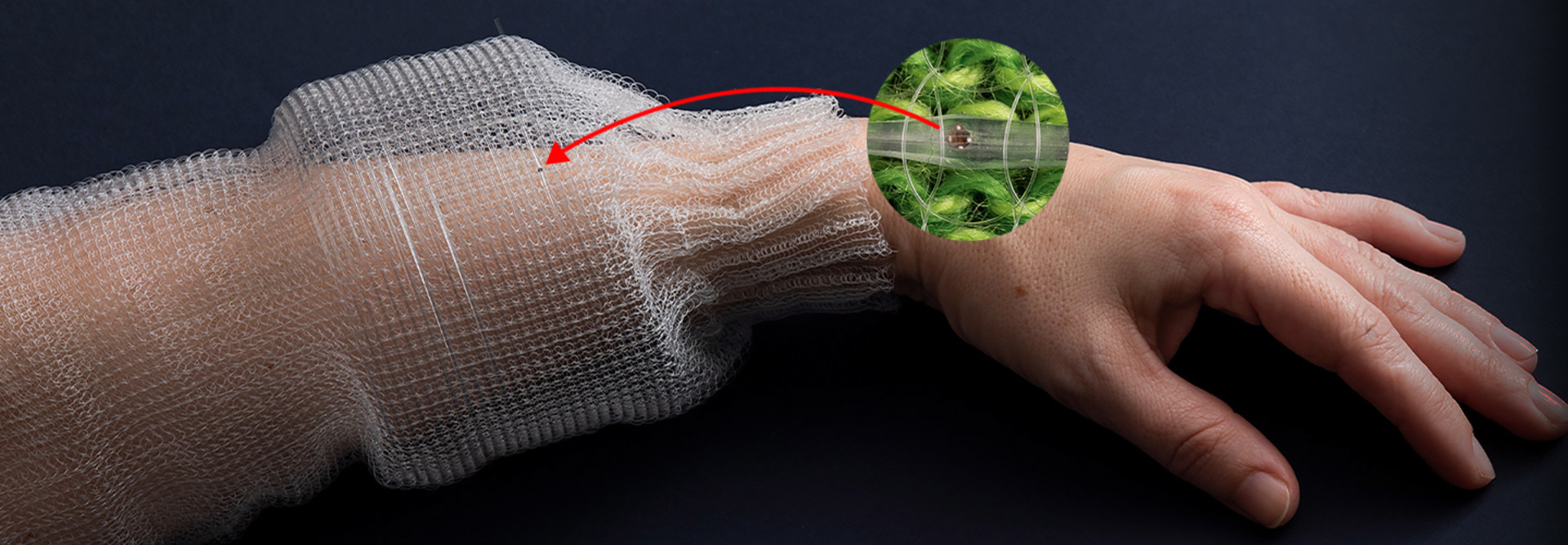The U.S. Army is taking the concept of wearables to its most literal extent.
Researchers at the Army’s Institute for Soldier Nanotechnologies (ISN) at the Massachusetts Institute of Technology have created a programmable fiber that can be woven into clothing to sense and analyze the wearer’s activities from a distance.
“This groundbreaking research could revolutionize soldier uniforms,” says James Burgess, ISN program manager for the Army Combat Capabilities Development Command (DEVCOM) at the Army Research Laboratory.
Made up of hundreds of silicon microchips that maintain an electrical connection, the fiber contains neural-network artificial intelligence. Sewn into the armpit of a shirt, the fiber can collect five hours’ worth of body temperature data and determine with 96 percent accuracy what the wearer is doing.
Eventually, researchers say, such fibers will be integrated into entire outfits, analyzing the whole body while the wearer goes about their business. “All of this technology is taking place in stealth mode. You don’t even know it’s happening,” says Gabriel Loke, a Ph.D. research assistant at MIT and lead author on a study of the fibers published in Nature Communications in June.
Click the banner below to get access to a customized content experience and exclusive articles.
Programmable Fibers May Give Soldiers Added Protection
Military application was always top of mind for the MIT ISN researchers, who designed the fibers to monitor health, stress and physical performance.
However, fiber-laced uniforms wouldn’t be limited to detecting what’s going on inside the body. For example, soldiers at a base could track the location or environmental exposure of those in the field. Detection of key sounds, such as distant explosions or enemy movement, might be possible, with that information sent to a helmet display or smartwatch.
Loke also imagines haptic feedback as an option. Soldiers may recognize the sound of a gunshot, but the limits of human perception can still make it difficult to pinpoint an exact location.
The programmable fiber uniforms could do it more precisely, then send wearers a warning signal. For example, if a gunshot goes off behind a soldier in battle, a vibration could be triggered on the corresponding spot on their back. “It’s something that could save lives,” Loke says.
VIDEO: Learn how the Army is using augmented reality to train soldiers.
Technology Woven into the Future of Military Uniforms
The road ahead will see further development, aided by a budget of $5 million per year, and the Army hopes to use the fabric in battlefield uniforms by 2050.
“We could outfit our soldiers with uniforms that could generate power, give them vital information about their physiology and environmental exposures, provide their location to their team and alert someone if they incur an injury,” says Burgess. “All of this could be done with very little increase in weight carried by the soldier.”
The MIT research team continues to refine the fiber. Durability is important; the fiber now can take 10 washes before it begins to deteriorate, and the scientists want to make sure constant bending doesn’t interrupt the connection between the microchips.
At the moment, a small external device is required to control the fiber, but a microcontroller within the fiber itself is in the works.
“We really hope to be the next big thing in wearables,” says Loke.














